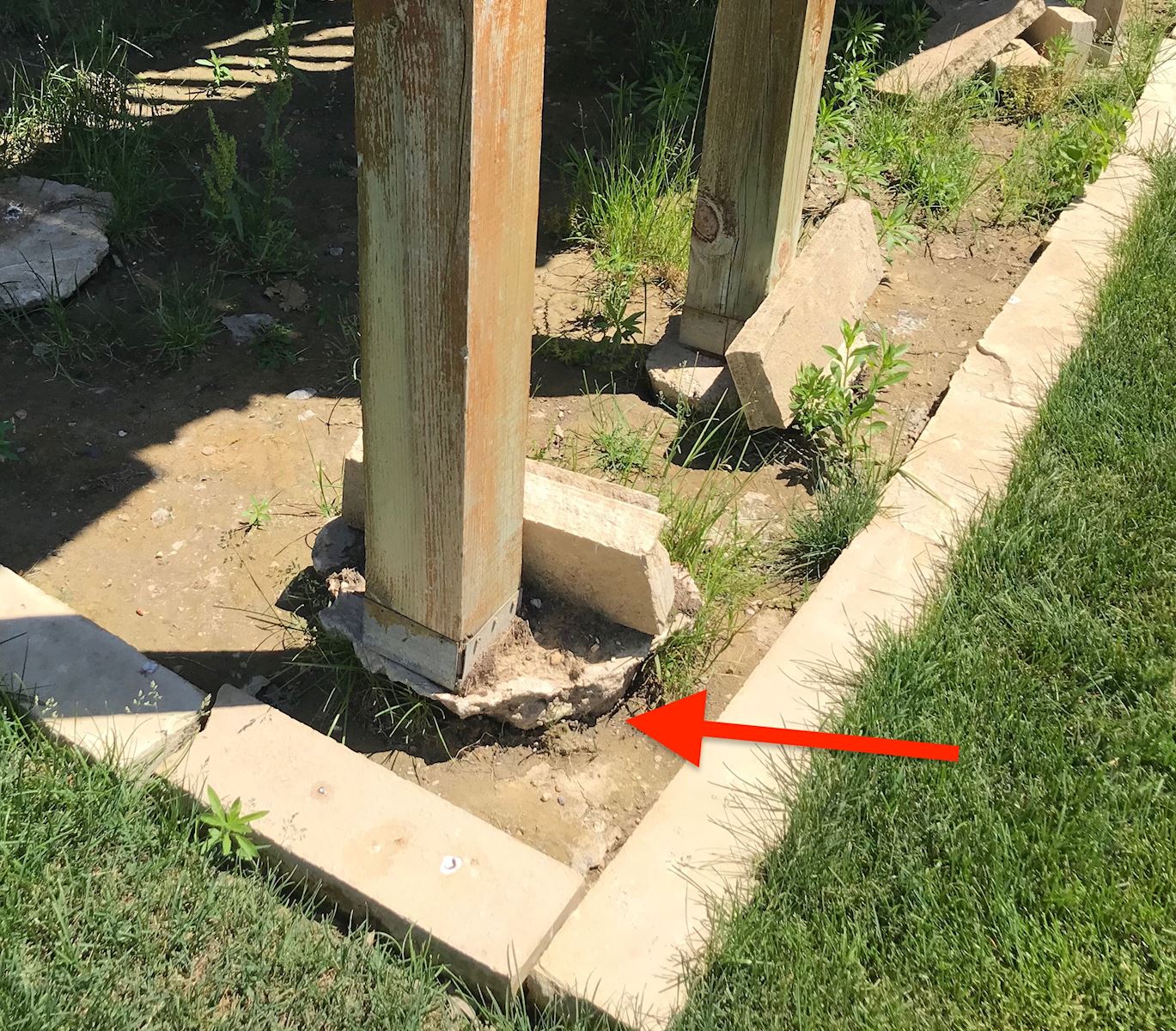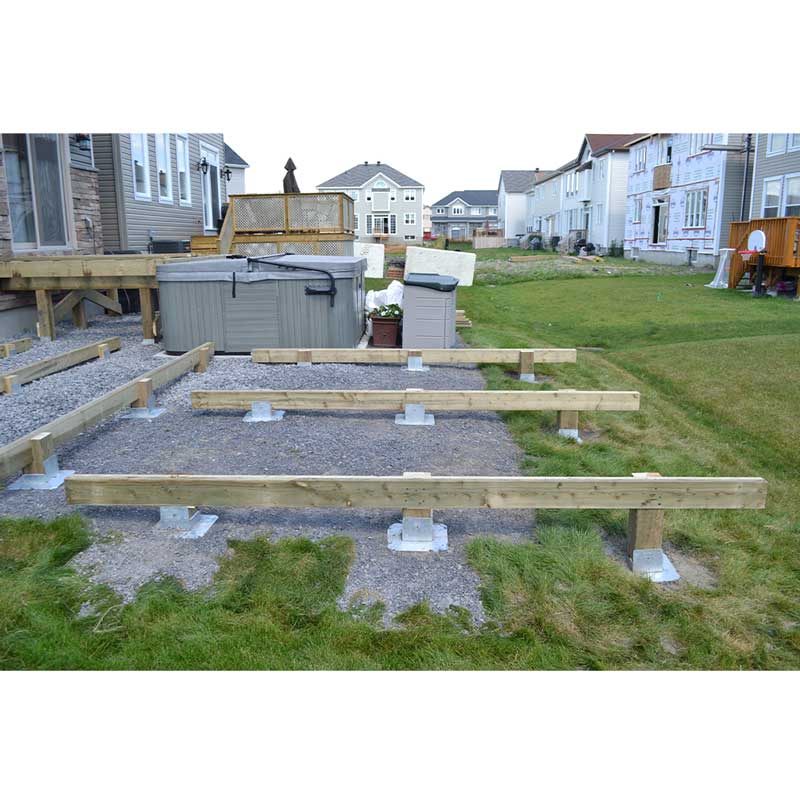Selecting the Right Deck Footings for Stability and Resilience
When it concerns developing a deck, among the most crucial decisions you will certainly make is choosing the right footings for security and longevity. The durability and safety and security of your deck depend greatly on the type of footings you select, as they provide the important support and security to withstand the test of time. With a myriad of options offered, it can be overwhelming to establish which grounds are best suited for your particular needs. In this conversation, we will check out the various kinds of deck footings, take into consideration the essential factors to evaluate when deciding, and explore the benefits and drawbacks of different options. By the end, you will have a more clear understanding of the options handy and be much better outfitted to make an informed choice for your deck project.
Types of Deck Footings
There are numerous kinds of deck grounds that can be made use of, each offering distinct advantages and factors to consider. One typical kind of ground is the concrete pier footing. These grounds include a cylindrical hole filled with concrete, which provides a solid foundation for the deck blog posts. Concrete pier grounds are fairly very easy to set up and supply outstanding security, making them a preferred choice for several deck jobs.
An additional type of footing is the helical heap ground. Helical stacks are steel shafts with helical plates affixed to them. These grounds are installed by screwing them into the ground, which creates a safe and secure foundation for the deck. Helical heap grounds are excellent for locations with challenging soil conditions, as they can be set up in practically any type of kind of soil. If needed., they also allow for simple modification and leveling of the deck.
Alternatively, some builders decide for precast concrete footings. These grounds are made of durable concrete and can be found in different sizes and shapes to fit various deck layouts. Precast concrete footings are convenient to set up and supply a secure base for the deck structure.
Lastly, one more alternative is the post-in-anchor footing system. This sort of footing includes driving a steel support right into the ground and connecting it to the deck message. It offers adaptability in regards to placing the deck articles and appropriates for decks with light-weight structures.
When selecting the best type of deck ground, it is crucial to consider factors such as soil problems, deck load, and regional building ordinance (Deck Footings). Consulting with an expert contractor or structural engineer can assist make certain the appropriate footing is picked for a stable and secure deck
Factors to Consider When Picking Footings
When picking the ideal footings for a deck, it is crucial to thoroughly consider various variables such as dirt problems, deck tons, and adherence to neighborhood building ordinance. These factors play a significant duty in making certain the security and resilience of the deck framework.
One of the primary aspects to take into consideration is the dirt problems. The kind of soil on which the deck will be built establishes the kind of footings called for. As an example, decks constructed on sandy or loosened dirts might require much deeper grounds to supply ample support and avoid settling. On the other hand, decks constructed on clay or large soils might need footings that can accommodate the soil's propensity to broaden and contract.
Another crucial factor is the deck lots. The weight of the deck, consisting of the materials utilized and any kind of prospective real-time tons such as furniture or events, should be taken right into account when selecting grounds. The footings have to be made to birth the weight of the deck and disperse it equally to avoid any kind of architectural concerns or failures.
Last but not least, adherence navigate to this website to local building codes is paramount. Building ordinance vary from region to area, and it is necessary to conform with the particular demands established by the regional authorities. Deck Footings. These codes guarantee that the deck is built securely and satisfies the needed criteria for structural stability and load-bearing capacity
Concrete Grounds: Advantages And Disadvantages

Concrete footings provide a number of benefits and disadvantages when made use of as the structure for a deck. On the silver lining, concrete grounds give outstanding security and sturdiness. Concrete is a inflexible and solid material that can support heavy tons and stand up to different climate condition. It additionally has a long life expectancy, making it a reliable option for long-term use.
One more advantage of concrete footings is their adaptability. They can be poured right into various forms and sizes to suit different deck designs and setups. Concrete footings can be personalized to fit the specific demands and requirements of the deck structure.
Nonetheless, there are additionally some drawbacks to using concrete grounds. One significant disadvantage is the price and labor included in their installment. Concrete grounds need excavation and usually require the aid of heavy equipment. This can increase the overall price of the deck task and may need professional aid.

Helical Piers Vs. Sonotubes: Which Is Much better?
In taking into consideration the structure options for a deck, the contrast in between helical piers and sonotubes is essential in identifying the exceptional option. Helical piers, additionally known as screw heaps, are steel shafts with helical plates affixed to them. They are turned right into the ground making use of hydraulic equipment, giving a stable and durable foundation for the deck. On the other hand, sonotubes are cylindrical forms constructed from cardboard or fiber product that are filled up with concrete. They are put in a hole went into the ground and give support for the deck.
The helical plates on the piers develop a solid hold with the soil, avoiding any kind of movement or changing of the deck. Sonotubes, on the various other hand, count exclusively on the concrete filling for security, which may not offer the very same level of toughness and resistance.
In regards to installation, helical piers are relatively see here now simpler and faster to mount compared to sonotubes. The hydraulic equipment made use of to twist the piers right into the ground makes sure a fast and effective process. Sonotubes, on the other hand, need digging holes and putting concrete, which can be labor-intensive and time-consuming.
In addition, helical piers are a more functional alternative. If required, they can be made use of in various dirt problems and can be changed or reinforced. Sonotubes, on the other hand, might call for added assistance, such as rebar, in certain soil problems or locations with high tons requirements.
Picking the Right Footings for Your Deck's Measurements
For ideal architectural integrity, it is important to thoroughly pick the ideal grounds that line up with the dimensions of your deck. The dimensions of your deck, including its elevation, length, and width, play a considerable function in figuring out the type and dimension of grounds called for.
When picking footings for your deck, it is necessary to take into consideration the load-bearing capacity of the dirt. The weight of the deck, integrated with the weight of any furniture or people on it, puts in a considerable force on the grounds (Deck Footings). It is crucial to choose footings that can effectively support this weight without changing or sinking over time.
Larger decks with greater dimensions call for bigger footings to offer adequate stability and assistance. The shape of the grounds, whether they are square or rounded, depends on the style and design of the deck.
Final Thought
In final thought, selecting the best deck grounds is important for making sure security and resilience. Variables such as the kind of grounds, the deck's measurements, and the pros and cons of different choices ought to be considered. Concrete footings use toughness and durability, but might be extra time-consuming and pricey to set up. Helical piers and sonotubes have their very own advantages and negative aspects. Inevitably, selecting the suitable footings for your deck's certain needs is necessary for a lasting and effective framework.
These footings are composed of a round hole filled up with concrete, which provides a strong foundation for the deck articles. Concrete pier grounds are relatively simple to install and supply outstanding security, making them a popular option for many deck jobs.
Precast concrete grounds are hassle-free to Click This Link install and give a stable base for the deck structure.
It uses adaptability in terms of placing the deck posts and is ideal for decks with lightweight frameworks.
Concrete grounds use several advantages and downsides when utilized as the foundation for a deck.